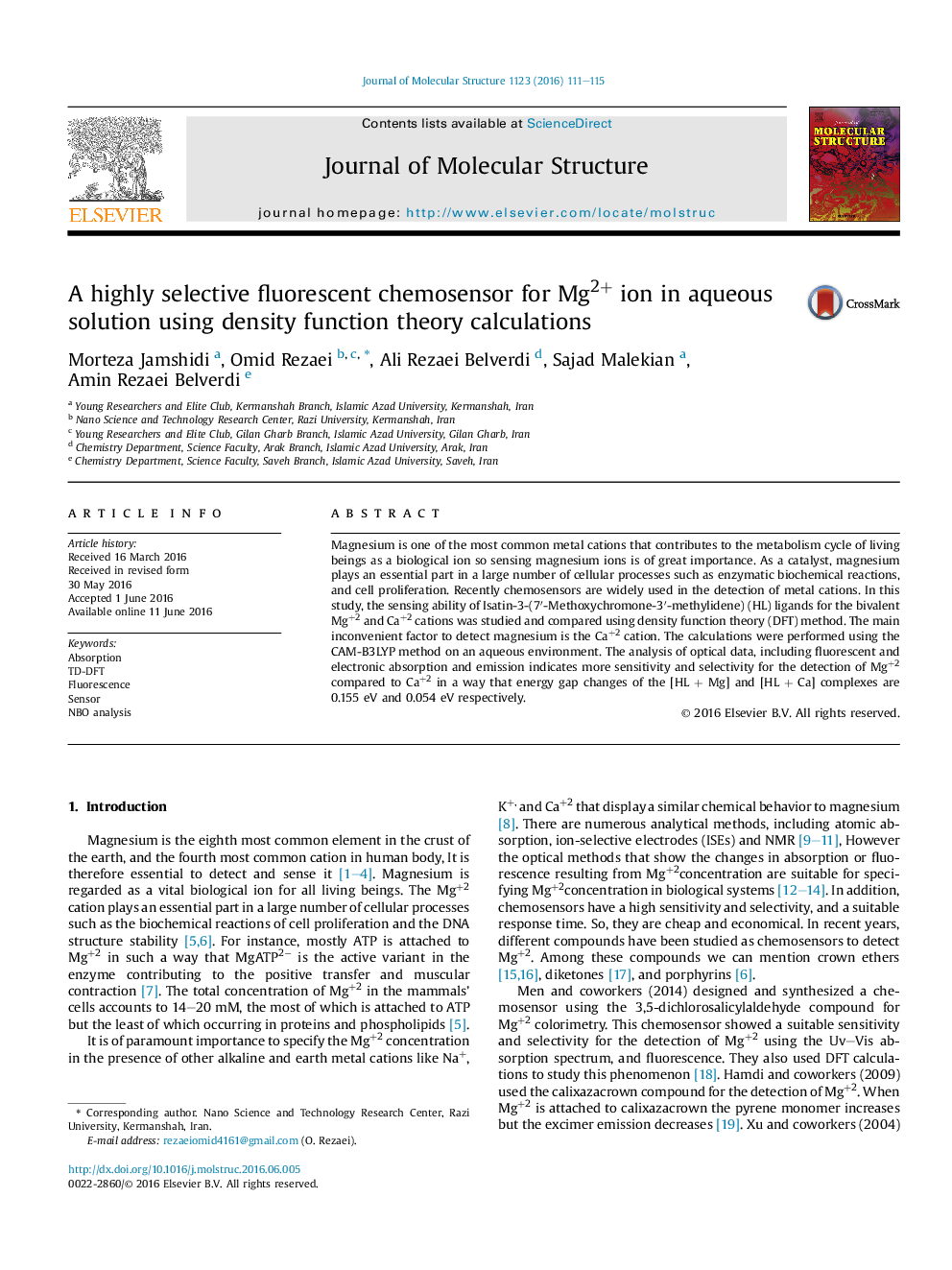| Article ID | Journal | Published Year | Pages | File Type |
|---|---|---|---|---|
| 1404719 | Journal of Molecular Structure | 2016 | 5 Pages |
•Ab-initio cam-b3lyp computations performed to simulate the emission HL ligand features.•NBO analyses shown the electron transfer between ligand and Mg2+ cation more than Ca2+.•The energy gap of [HL + Mg] greater than [HL + Ca].
Magnesium is one of the most common metal cations that contributes to the metabolism cycle of living beings as a biological ion so sensing magnesium ions is of great importance. As a catalyst, magnesium plays an essential part in a large number of cellular processes such as enzymatic biochemical reactions, and cell proliferation. Recently chemosensors are widely used in the detection of metal cations. In this study, the sensing ability of Isatin-3-(7′-Methoxychromone-3′-methylidene) (HL) ligands for the bivalent Mg+2 and Ca+2 cations was studied and compared using density function theory (DFT) method. The main inconvenient factor to detect magnesium is the Ca+2 cation. The calculations were performed using the CAM-B3LYP method on an aqueous environment. The analysis of optical data, including fluorescent and electronic absorption and emission indicates more sensitivity and selectivity for the detection of Mg+2 compared to Ca+2 in a way that energy gap changes of the [HL + Mg] and [HL + Ca] complexes are 0.155 eV and 0.054 eV respectively.
Graphical abstractFigure optionsDownload full-size imageDownload as PowerPoint slide
